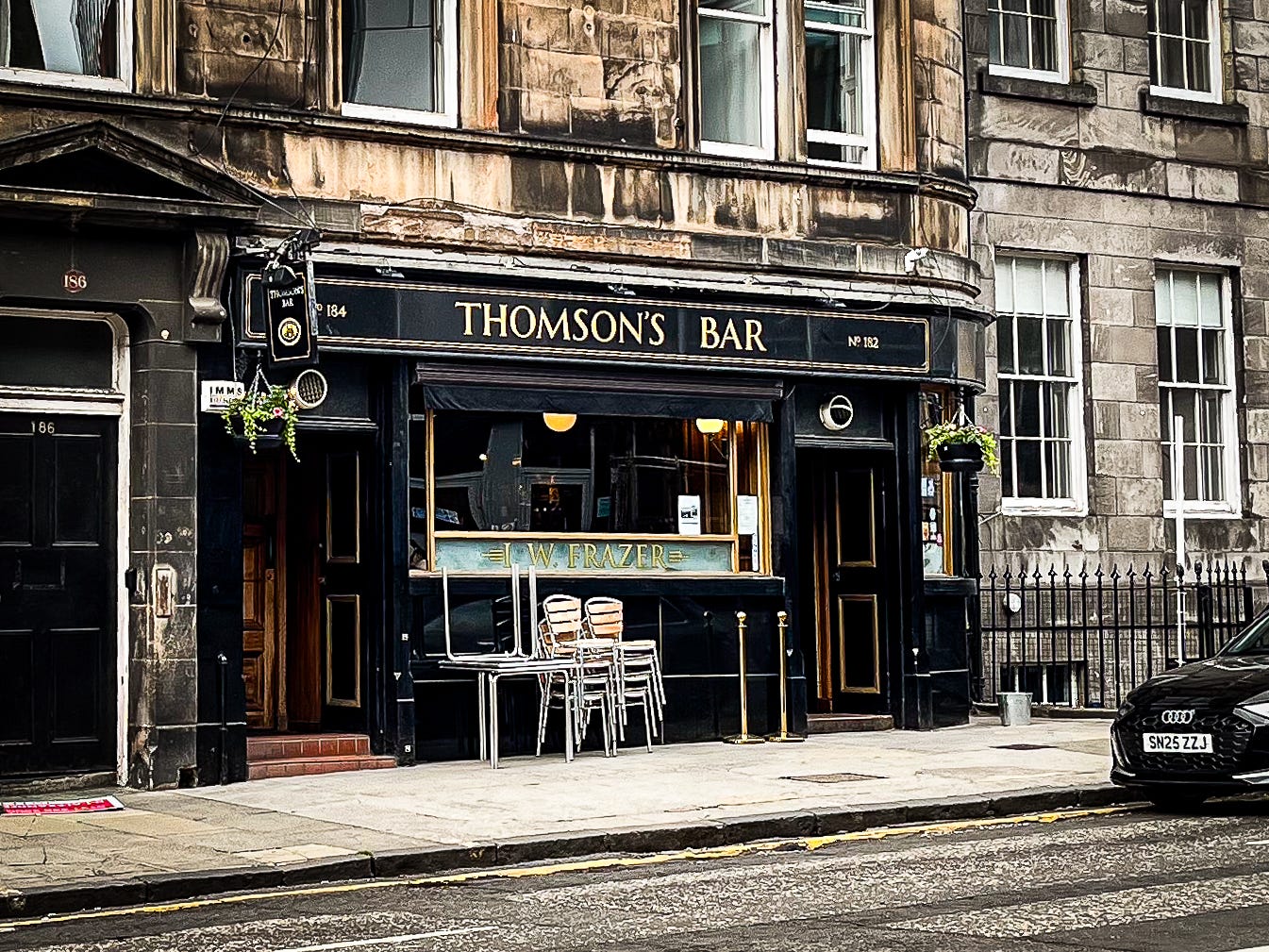Thomson’s Bar – Taking pubs for granted, pt. 3
A simple but elegant one-room pub with few rivals around Haymarket.
It was the readers of Edinburgh Pub Reviews who alerted me to Thomson’s Bar. When I wrote about the publican Ian Whyte – known for refurbishing many Edinburgh pubs in a classic old-fashioned pub style – his redesign of Thomson’s was mentioned in the comments. When I lamented the lack of decent pubs near to Haymarket, Thomson’s was again raised as a bright spot in a fairly sparse neighbourhood.
The pub itself is your basic one-room boozer. The large chequerboard floor tiles are the first thing to catch your eye upon entry; they provide a welcome backdrop to the heavily-wooded decor that dominates the rest of the room. Some central high tables are surrounded by an outer rim of tables up against the walls. The impressively carved ornate bar, with matching gantry, dominates one side.
Though this is a classic old-fashioned Scottish boozer, the design dates only from 2000, when Whyte bought the old Bissets Bar and gave it one of his refits. He had already beautified boozers such as Bow Bar and Cumberland Bar, turning them into tasteful and timeless taverns. This time, he was inspired by Alexander “Greek” Thomson, an influential Glasgow architect from the 19th century. The bar’s design certainly has a Victorian feel to it, and pays tribute to Thomson with carvings in the woodwork reflecting his love of Ancient Greek mythology.
On a busy night, conversation bounces off the walls and adds to a lively atmosphere. But my first visit is on a quiet midweek evening. I glance up at a redundant TV up in one corner, pointlessly showing the BBC News Channel on mute. A few of the regulars are keeping the barman entertained, and there are a couple other solo travellers like me, but apart from that there’s plenty of place to sit. It’s a good spot to get through a couple of chapters of your book.
Four tall fonts – a rare traditional way of dispensing beer – stand at the bar but are not in use. However there are four cask beers to choose from, but I play it safe with a Jarl (£5.20). It’s usually hard to mess up a Jarl, and this is a predictably pleasant pint. I take it to an empty table.
When I return a few weeks later, it has a weekend atmosphere. It’s far busier (mostly, but not exclusively, older blokes). We take one of the only free tables, and although the prices seem to have creeped up a little, the beer is still good. It’s an old-fashioned pub, purposefully designed to be, and this Saturday night has a timeless quality. The current iteration is 25 years old, but it feels like we could sit at our corner table, be whizzed back and forth through the decades and hardly notice a change. Perhaps the only clues to which year we were in would be the prices on the chalk board – and the BBC News Channel on the telly in the corner.
Where is it?
Where next?
Ryrie’s is just up the road next to Haymarket station. It’s also gone through an impressive redesign, and retains and celebrates many features from when it was first built over a century ago.
The chaser – More on pub styles
At first, most pubs were indistinguishable from domestic architecture. The humbler public house was literally that: the home of the landlord, who offered refreshment in his parlour or tap-room. Larger inns and taverns had more numerous and grander rooms accommodating all kinds of activities, from ratting and boxing to concerts and political meetings.
By happenstance I came across this article from The Architectural Review this week. It’s from 2016, but attempts to categorise the British pub in the modern age. If you’re interested in the role of pub buildings themselves, it’s worth a read.





